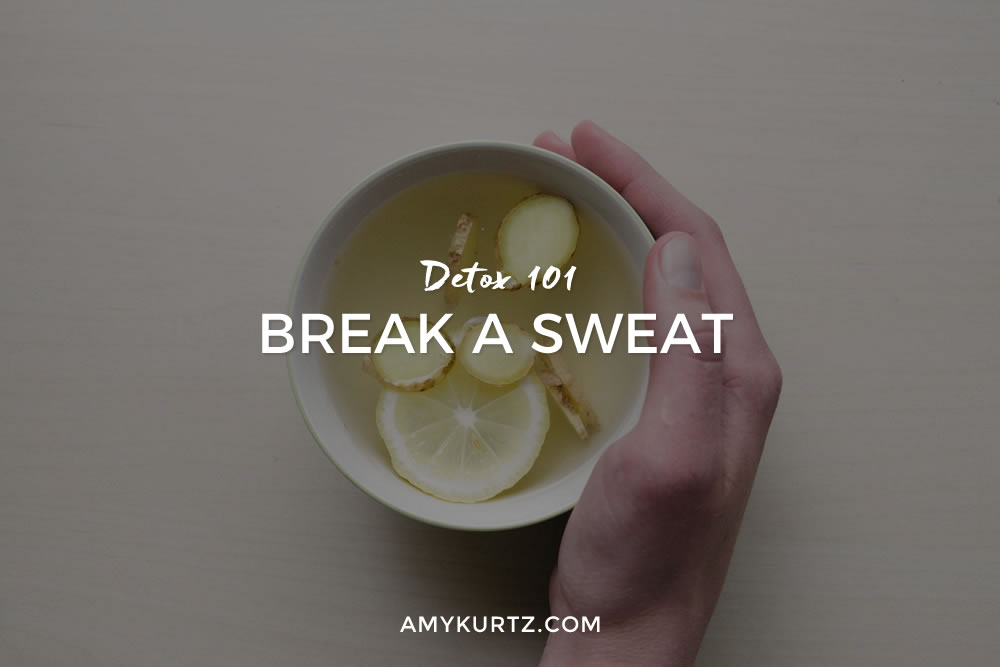I go out of my way to break a sweat, at least three times a week. You should too.
Why? Because sweating is good for you—good for your skin, good for your body, good for you on a cellular level and good for your stress levels.
Conspire to Perspire
The skin is the largest organ in the body. Your skin has thousands of sweat glands that work to keep your body temperature regulated. When it’s hot outside, your body reacts by sweating because when the sweat evaporates, it cools you down. When you generate heat through exercise, you also generate sweat to temper that heat. Your sweat is mostly water; it also contains salt, ammonia, urea, and trace minerals and metals, and releasing these substances plays a role in helping your body eliminate toxins. After breaking a sweat through exercise or by altering the external environment (baths, saunas, e.g.), you feel relaxed and renewed.
[Related: Research: Sweat Your Way to A Healthier Brain]
To reap these rewards, set a goal of breaking a sweat at least three times a week.
When you throw in the benefits of the kind of vigorous exercise that makes you perspire, sweating is a natural way to better health and vitality. Exercise doesn’t have to be onerous, and it can fit into your frantic lifestyle. I like to try new workout classes to keep my workouts interesting.
Switch it up to keep it interesting, and schedule it in. Create the space for yourself. It’s important and your body will thank you for it later.
Go for the Glow
A good follow-up to exercise but also a good stand-alone treat to keep your sweat glands activated is a session in the sauna or steam room. If you have never visited a sauna, you are overdue for an incredible experience. I prefer an infrared sauna, which heats, as its name suggests, with infrared technology—i.e. like the sun, the sauna heats you, but not the air around you. This penetrating heat really reaches into your cells to stimulate sweating and the release of toxins. An infrared sauna differs from a traditional sauna because it raises your core body temperature, thus helping you sweat more quickly and more profusely. This deep-down heat is very soothing to joints and muscles, and, by opening your pores, gives your skin a deep cleanse and exfoliates dead skin cells.
Unlike the dry heat of a sauna, a steam room surrounds you with hot, moist air with 100 percent humidity. A steam room provides the same benefits as a sauna at a lower temperature: a typical steam room is heated to around 110 F, whereas an infrared sauna heats to 140 F.
If you suffer from nasal or sinus congestion, however, a good session in the steam room will definitely help loosen and eliminate excess mucous. In the end, though, for sweating and relaxation, the choice of sauna versus steam is yours.
Whether you choose exercise, sauna, or steam to activate your sweat glands, you must—here it comes—hydrate, hydrate, hydrate! The water you lose through perspiration should be replaced. Drink water before your activity and after. Keep your electrolytes up and come prepared with a coconut water, watermelon juice, or lemon in your water. Rehydrate.
Bathe Blissfully
This is one of my favorite nightly rituals and it happens to be a) awesome for you and b) helps you sweat. I like to draw a hot bath, put in some lavender or eucalyptus essential oil, add two cups of Epsom salts, then soak for at least 20 minutes. Mark Hyman, MD, recommends this “ultra bath” as a way to relax, open the pores for sweating and cleansings, and absorb the magnesium contained in Epsom salt. Magnesium is an essential mineral for the body, and soaking in an Epsom salt bath lets the magnesium be absorbed through your skin. What better way to end your day—relax, cleanse, and load up on a vital mineral?
Sweating is one of the easiest ways to detoxify the body. Whether you join a spin class, schedule a session in an infrared sauna, or take a long soak in a hot bath, go out of your way to work up a sweat! Start now!


